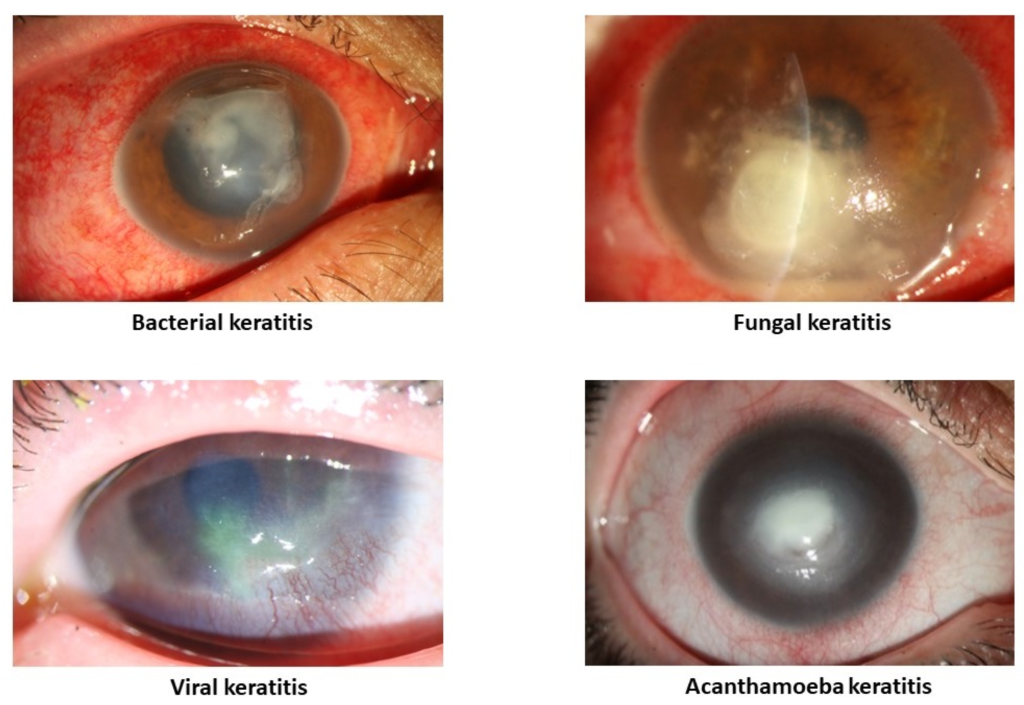Bacterial corneal ulcers infection, also known as bacterial keratitis, are a serious condition that affects the cornea, the clear, dome-shaped surface covering the front of the eye. This condition requires prompt attention as it can lead to vision loss if untreated. Understanding the causes, symptoms, diagnosis, treatment, and prevention of bacterial corneal ulcers is crucial for maintaining ocular health.

Causes of Bacterial Corneal Ulcer
Common Bacterial Agents
The most common bacteria causing corneal ulcers include:
- Pseudomonas aeruginosa: Frequently associated with contact lens wear.
- Staphylococcus aureus: Often linked to skin and eyelid conditions.
- Streptococcus pneumoniae: Known for severe infections.
Risk Factors
Several factors increase the risk of developing bacterial corneal ulcers:
- Contact Lens Usage: Improper hygiene or extended wear of contact lenses.
- Ocular Trauma: Injuries to the cornea, often caused by foreign objects.
- Pre-existing Eye Conditions: Dry eye syndrome or corneal diseases.
- Immune System Compromise: Conditions like diabetes or immunosuppressive therapies.
Symptoms of Bacterial Corneal Ulcer
Key Indicators
- Severe eye pain and redness
- Blurred vision
- Sensitivity to light (photophobia)
- Excessive tearing or discharge
- Visible white or gray spot on the cornea
Warning Signs
- Rapid progression of symptoms
- Worsening pain despite initial treatment
Prompt medical evaluation is essential if these symptoms occur.
Diagnosis
Comprehensive Eye Examination
An ophthalmologist may perform the following tests:
- Slit-Lamp Examination: Allows detailed visualization of the cornea.
- Corneal Scrapings: Collected for culture and sensitivity tests to identify the causative organism.
- Fluorescein Staining: Highlights the ulcerated areas of the cornea.
Treatment Options
Antibiotic Therapy
- Broad-Spectrum Antibiotics: Used initially to cover multiple bacteria.
- Targeted Antibiotics: Administered based on culture results.
Adjunctive Treatments
- Cycloplegic Drops: Reduce pain by relaxing eye muscles.
- Corticosteroids: Used cautiously to reduce inflammation, under strict medical supervision.
Severe Cases
In advanced infections, corneal transplantation (keratoplasty) may be necessary to restore vision.
Prevention Strategies
Proper Contact Lens Care
- Wash hands thoroughly before handling lenses.
- Avoid sleeping in contact lenses unless prescribed.
- Disinfect lenses regularly with appropriate solutions.
Eye Protection
- Wear protective eyewear during activities that risk eye injury.
General Hygiene and Health
- Avoid touching or rubbing the eyes.
- Treat underlying health conditions promptly.
Corneal Ulcer Progression
Bacterial corneal ulcers are a medical emergency requiring immediate intervention. By understanding the risk factors, symptoms, and treatment options, individuals can protect their vision and maintain eye health. Regular eye check-ups and adherence to preventive measures are key to avoiding this serious condition.
myhealthmag